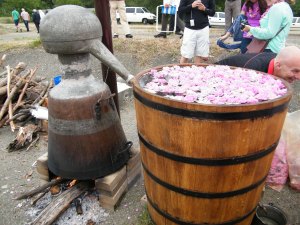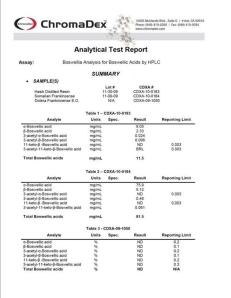 Most of the rose oil – Rosa damascena produced in the world comes from the Valley of the Roses in Bulgaria. On this unique tour you will enjoy the excitements of the Rose Festival,
Most of the rose oil – Rosa damascena produced in the world comes from the Valley of the Roses in Bulgaria. On this unique tour you will enjoy the excitements of the Rose Festival,
take part in the rose harvest, see the rose distillation process and more importantly buy the freshest rose otto oils and related products at anufacturer price.
The superb qualities of Bulgaria’s variety of grapes are also famous to the world. Wine production in Bulgaria goes back to the ancient times and Thracian’s wines are well-known of their delicious tastes. Wine degustation is another highlight of this tour.
Beautiful Bulgaria has a traditional rural heart containing medieval cities and exquisitely preserved towns, providing a window onto a Europe that has all but vanished. Beside roses and wines, you will visit the beautiful medieval city of Plovdiv with its romantic old town and the capital city of Sofia; visit the most magnificent Thracian tombs in Europe; experience an eco-trek walk and the traditional village living.
Day 1 Arrive in Sofia and head onto the village of Kalofer and transfer to Cucovata House. In the evening, hear a talk on “The History of the Rosa Damascena” and enjoy a welcome dinner at the house with traditional home cooked food.
Day 2 Rise early to join the rose harvest in the rose fields.Afterwards, a workshop on Bulgarian oils and in the afternoon you will join a workshop with Nikolay to prepare rose jam and rose syrup. Dinner with live music.
Day 3 Join local guide Nikolay for a full day hike along the Biala Reka eco-path, examining local flowers and herbs on the way with a picnic lunch en route. It is powerful experience to feel frothy river in canyons and see all those waterfalls. There up on mountains is special floora and fauna with flowers, butterflies and birds. This specialist walk received the Conde Nast Traveller Award for best eco-destination in the world in 2005.Later, visit the men’s monastery and hear a liturgy.
Day 4 Plovdiv -city tour. It is declared an architectural museum reserve with over 150 monuments of culture – houses from the National Revival period. Its magnificent houses are turned into museums, galleries, workshops, restaurants. There are also parlors and studios of painters and wood-carvers. Families from Plovdiv own many of those houses. The most distinguished examples of the Baroque of Plovdiv are the house of Koiumjioglu (now an ethnographical museum), the house of Georgiadi (now the Rennaissance museum of the national struggle), the house of Nedkovich (the municipality), the gallery of the renowned Bulgarian painter Zlatyo Boyajiev, the house of Balabanov (now a gallery of modern painting, as well as a concert hall). UNESCO awarded Plovdiv a gold medal for architecture in 1979.
In the afternoon we visit “Starossel Winery. In Bulgaria there are idealistic conditions for wine cultivation and already wines of Thrace were world famous in ancient times. Near by on a mountain is Sacred Dionysos Temple (it is found year 2000) and it is located near Starossel village. We are in very heart at the feet of wine art.
Day 5 Spend the following morning at the Rose Festival in the nearby village, watching locals
dressed in colourful traditional costumes performing live music and folk dances, and the Rose Queen Parade. In the afternoon, drive to Tarnichene and visit its active rose distillery, the Enio BonchevDistillery, where you will learn first-hand about the painstaking process used for harvesting and producing this precious substance, and the use of rose oil in a variety of products from oils to rose jam and rosewater. In the evening, enjoy dinner back at Cucovata House.
Day 6 Visit the UNESCO World Heritage Thracian Tombs at Kazanluk, which are famous for their unique mural paintings, as well as the newly opened Thracian Tombs of Golamo Kozmitska. In the afternoon, visit the Church of St Nikolay. Near by is in Gomi Dubnik village high on the mountains memorial of Balkan Peninsula war (1877 – 1878). There were also Finnish soldiers championed to free Bulgaria over 500 years occupation Turkish regime. There is still well known song from these times and both Finnish and Bulgarian people know it.
Day 7 Spend the next day in Kalofer, starting with a visit to the traditional laundry. Visit the Women’s monastery, the 200year old mill and the Church of the Archangel Mikhail., before a Farewell Dinner at Cucovata House.
Day 8 Next morning, drive to Sofia for your flight
The cost of the tour is 720 Euro per person (except flights)
The cost includes:
• The services of a tour leader In Bulgaria the cost includes:
• 7 nights’ accommodation in twin or double-bedded rooms with private facilities at the Cucovata House
The single room supplement is 100 eur.
• Breakfast daily
• Dinner Daily
• Lunches on days 5 and 7
• A full programme of talks (CPD granted by IFPA)
• A full programme of visits as per the itinerary
• Admission fees where applicable
• Full-time National Guide
• All transport on the tour excluding flights
The cost excludes:
• Flights and taxes.
• Meals not mentioned
• All personal extras such as tips, porterage, laundry,
inoculation fees and drinks
• All optional excursions, tours and visits
• Travel insurance
Please note, all itineraries are subject to change
according to local conditions. Due to the nature of the
tour places are limited to 25.
If you want to hear more please contact Anita at essentiallyholistic@gmail.com.
If you would like to join the Rose Tour in 2014 for your own Bulgarian adventure contact:
Susan Hagan E-mail: su.hagan@hotmail.co.uk Tel: 00359(0)895195318 (Bulgarian Mobile) 00359 6128263 (Bulgarian Landline)






